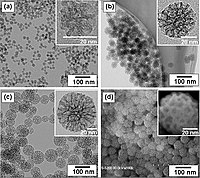
Photo from wikipedia
Abstract RP-3 kerosene is the most important hydrocarbon fuel used in civilian airplanes in China. Up to date, there are few experimental literatures on soot formation and oxidation of RP-3… Click to show full abstract
Abstract RP-3 kerosene is the most important hydrocarbon fuel used in civilian airplanes in China. Up to date, there are few experimental literatures on soot formation and oxidation of RP-3 kerosene available. In this experimental study, the evolution, nanostructure, and oxidation reactivity of the soot particles for RP-3 kerosene in normal and inverse diffusion flames, were investigated. The n-decane was selected as a base fuel for the comparison. Thermophoretic techniques followed by transmission electron microscopy were used to study the evolution of the soot particles in the different locations at the centerline and radial stream of the flames. Nanostructure, lattice parameters, and oxidation reactivity of the soot particles were examined by high-resolution transmission electron microscopy, X-ray diffraction, and thermogravimetric analysis. The results showed that the size of RP-3 kerosene flame soot particles was bigger than n-decane flame at 20 m m and 30 m m height above the burner surface for normal diffusion flame. In inverse diffusion flame, RP-3 kerosene flame had bigger soot aggregates than n-decane flame. Moreover, RP-3 kerosene flame nanostructure had larger fringe length and shorter fringe tortuosity than n-decane flame in normal and inverse diffusion flames, which reflect lesser oxidation reactivity of the RP-3 kerosene flame. X-ray diffraction spectrum and thermogravimetric curves displayed good agreements with the high-resolution transmission electron microscopy images. Finally, the nanostructure of soot particles had a strong relation to their oxidation reactivity.
Journal Title: Journal of The Energy Institute
Year Published: 2020
Link to full text (if available)
Share on Social Media: Sign Up to like & get
recommendations!